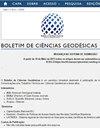利用qr码定位室内环境的地标评价
IF 0.5
Q3 Earth and Planetary Sciences
引用次数: 2
摘要
在封闭的环境中,人们往往会失去方向感,而室内地图的作用是通过了解环境,识别参考点或定位,帮助用户在这些空间中导航。在室内环境下实现定位的几种形式中,本研究采用了基于图像识别的qr码标签识别方法,该方法成本低,易于实现,且精度不受环境影响。因此,本文介绍了使用qr码标记贴在可能的参考点上,以确定用户在室内环境中使用移动设备的位置。本研究旨在通过评估室内环境中最常用的参考点和参考点类型,发现在环境中放置qr码的最合适地点。因此,本研究基于这样的假设:如果仅通过参考点获得初始定位,这就足以让用户自己定位。通过对用户完成的导航任务的结果进行分析,我们可以获得被引用最多的元素作为参考的数据。结果表明,人们在相同的环境中以不同的方式定位自己,并将楼梯、电梯和决策点等环境结构元素作为主要参考点;一般来说,结构参考点是那些最常用于支持定向和导航的点。本文章由计算机程序翻译,如有差异,请以英文原文为准。
LANDMARKS EVALUATION WITH USE OF QR-CODE FOR POSITIONING INDOOR ENVIRONMENT
People tend to lose their sense of direction in closed environments and the role of indoor maps is to assist the user in navigating in these spaces, through understanding the environment, identifying reference points or positioning. Among the several forms of achieving positioning in indoor environments, this research used the method based on image recognition through identification of QR-Code labels, because of their low cost, easy implementation, and because their accuracy is not affected by the environment. As such, this article presents the use of QR-Code markers affixed to possible reference points to determine user positioning in an indoor environment using a mobile device. This study seeks to discover which are the most appropriate sites for placing QR-Codes in an environment, by evaluating what reference points and what type thereof are most used in indoor environments. This study is therefore based on the hypothesis that if initial positioning is obtained only through reference points this is sufficient for users to orient themselves. Through analysis of the results obtained from navigation tasks done by users we were able to obtain data regarding elements most cited as references. The results show that people orient themselves in distinct ways in the same environment and use as their main reference points structural elements of the environment such as stairways, lifts, and decision-making points; in general structural reference points were those most used to support orientation and navigation.
求助全文
通过发布文献求助,成功后即可免费获取论文全文。
去求助
来源期刊

Boletim De Ciencias Geodesicas
Earth and Planetary Sciences-General Earth and Planetary Sciences
CiteScore
1.70
自引率
20.00%
发文量
10
审稿时长
3 months
期刊介绍:
The Boletim de Ciências Geodésicas publishes original papers in the area of Geodetic Sciences and correlated ones (Geodesy, Photogrammetry and Remote Sensing, Cartography and Geographic Information Systems).
Submitted articles must be unpublished, and should not be under consideration for publication in any other journal. Previous publication of the paper in conference proceedings would not violate the originality requirements. Articles must be written preferably in English language.
 求助内容:
求助内容: 应助结果提醒方式:
应助结果提醒方式:


